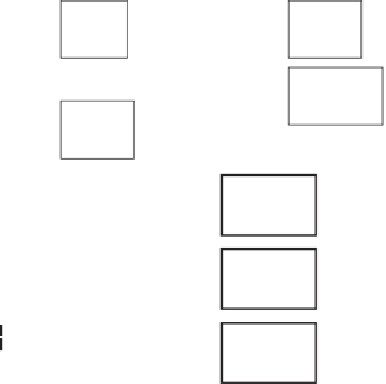Database Reference
In-Depth Information
When managing global data access, a primary goal for DDBMS is transparency.
All aspects of data distribution must be transparent to the users. Users at any site
must not be concerned about the location of the data requested by them, nor should
they need to know how the data are obtained. Because of the significance of trans-
parency, a later section covers the topic in detail. Let us now examine the compo-
nents of DDBMS and see how they fit together.
Architecture and Components
As you know, for a centralized database, the
DBMS supports three schema levels:
•
External schema representing the set of user views of the database
•
Conceptual schema representing the entire database
•
Internal schema consisting of the physical representation of the entire database
as files, blocks, and records
These are clearly identifiable and applicable to all centralized database systems.
In the case of distributed database systems, however, variations on the types of
schemas are possible. We will present two such variations, one for a homogeneous
system and the other for a heterogeneous or federated system.
Homogeneous system: schema levels
Figure 18-5 shows a configuration with the
following schemas:
•
A collection of global external schemas
•
A single global conceptual schema
•
A fragmentation schema
Global
External
Schema
Local
Mapping
Schema
Local
Conceptual
Schema
Local
data
DB
Local
Internal
Schema
DBMS
London
DDBMS
Local
Mapping
Schema
Global
Conceptual
Schema
Global
External
Schema
Local
Conceptual
Schema
Global
External
Schema
Local
Mapping
Schema
Frag-
mentation
Schema
DBMS
Local
data
DB
Local
Conceptual
Schema
Local
Internal
Schema
Allo-
cation
Schema
Local
Internal
Schema
Tokyo
Local
data
DB
DBMS
New York
Figure 18-5
Homogeneous system: schema levels.








































Search WWH ::

Custom Search